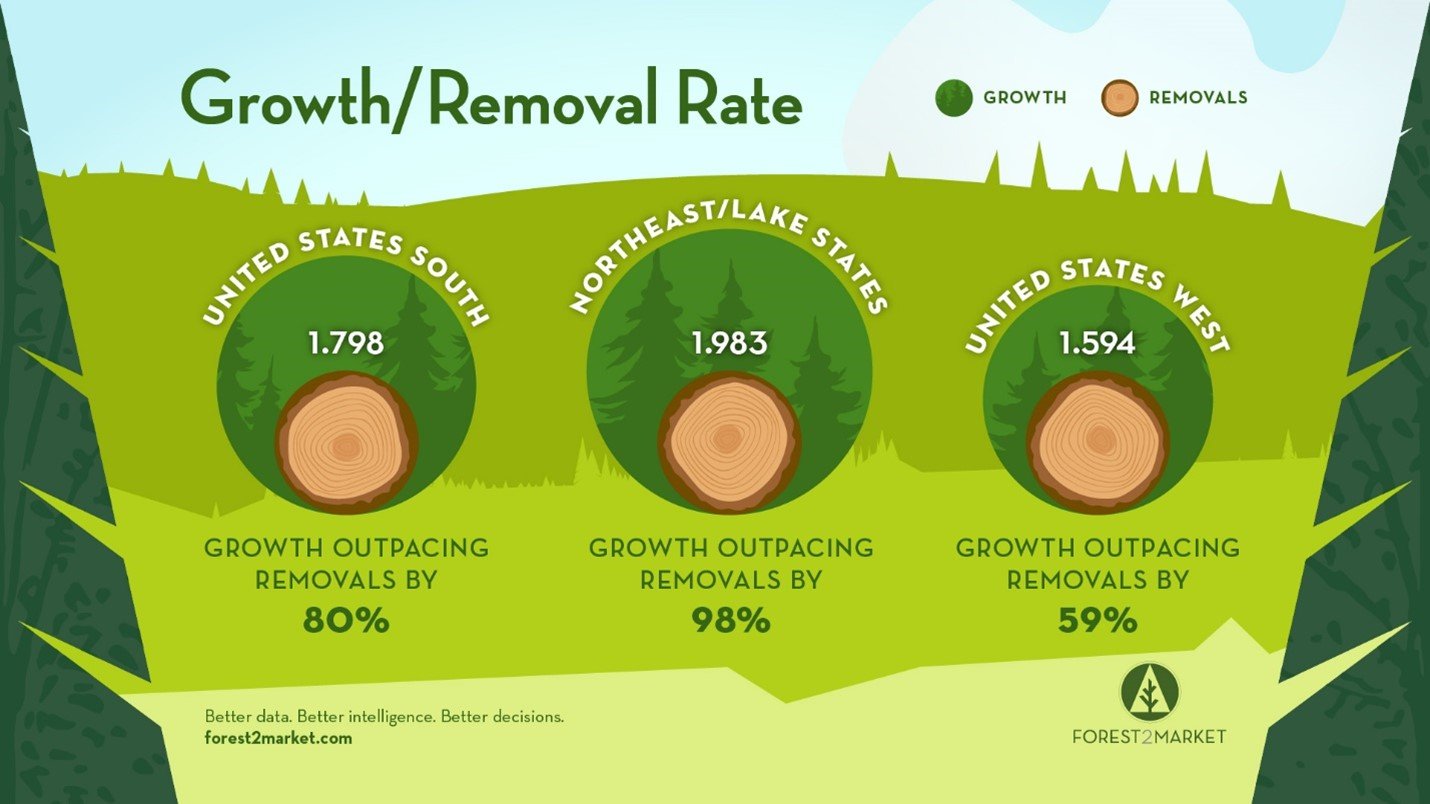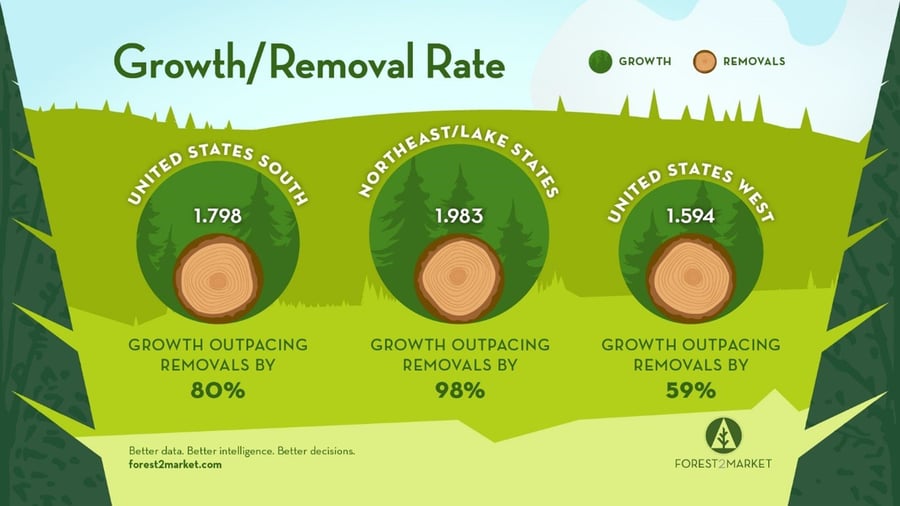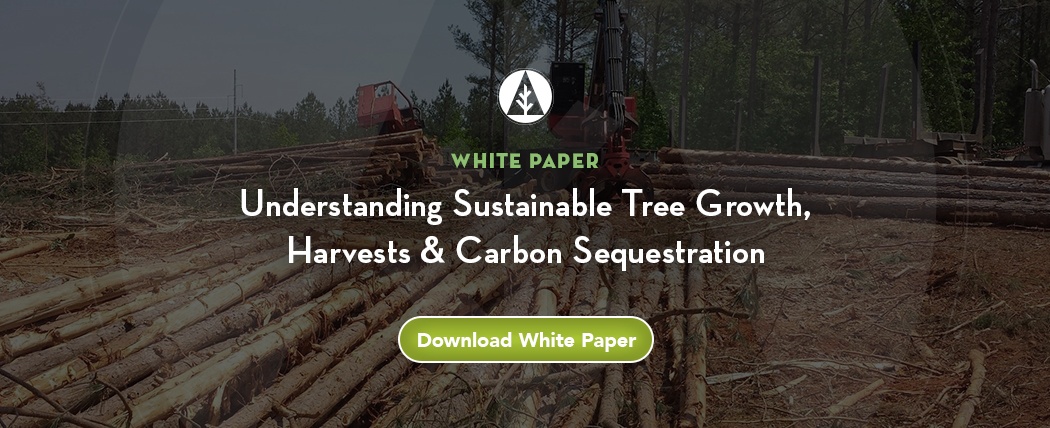2 min read
Celebrating the Circular Economy: National Forest Products Week 2021
Forest2Market
:
October 18, 2021

In 1960, the US Congress issued the first joint proclamation designating the third Sunday in October as the beginning of National Forest Products Week. It was signed by President Dwight D. Eisenhower and has since been recognized and honored by every sitting US President.
This year, National Forest Products Week falls on October 17-23, and we see it as a time to recognize and advocate for the entire forest value chain that delivers the valuable forest products we all rely on in our daily lives. By offering natural, renewable, plant-based products, the forest products industry continues to provide innovative and sustainable solutions that help drive the circular economy.
This week is also a time to advocate for the proper management of the resources within our forests that play a vital role in mitigating climate change. Managed forests are healthy forests, and expanding markets for all kinds of wood products helps keep forestlands forested. A diversified wood products industry enhances the resiliency of our ecosystems, helps to sequester carbon and creates jobs in rural communities.
Working forests provide the raw materials necessary to support 2.9 million jobs in the forest products industry with total direct, indirect and induced payrolls of $128 billion!
READ: How Much Timber Does the US Harvest, and How is it Used?
Working Forests Benefit Us All
The benefits of actively managed forests are critical for all of us, not just our rural communities. Working forests filter almost 30% of our drinking water, provide habitat for 60% of our at-risk species, and sequester enough carbon to offset 10-15% of our industrial carbon emissions annually.
More Growing Trees = More Sequestered Carbon
- In the US alone, there are approximately 1.4 trillion live trees across all age/size classes on more than 635 million acres of forestland in the continental US.
- These trees store an estimated 71,808 million metric tons (MMT) of carbon dioxide (CO2).
- Across the US, forests, urban trees, and harvested wood products store the equivalent of 33 years of all CO2 emissions produced in the country.
And just like the living, growing trees in the forests, finished wood products also sequester carbon as lumber used in our homes and buildings, wood in our furniture, and the more than 5,000 paper and packaging products we use every day.
Contrary to what is oftentimes promoted in popular media, America’s working forests are not being destroyed or “deforested” beyond repair. According to the USDA, from 1953 to 2011—a time of expanding population and increasing demand for solid wood products, paper products, and energy—the total volume of trees grown across the US increased by 50%. Due to innovations in silvicultural management techniques, today, private forest owners are growing 43% more wood than they remove from their timberlands.
How Do We Know America’s Forests Are Not Being Permanently Destroyed?
The most precise method to gauge the balance of tree growth and removals is to analyze the growth-to-removal ratio (GRR), which reflects the interplay between these two metrics in a given forested area. As an indicator of the trajectory of available supply over time (not a snapshot of availability at a moment in time), a GRR calculation quantifies overall forest sustainability. A value of 1.0 suggests growth and removals are in balance; a value greater than 1.0 means forest inventory growth is outpacing removals (greater sustainability), and a value lower than 1.0 means removals are outpacing growth (lower sustainability). Per the most recent data via the US Forest Service, America’s forested regions have an excess of available supply.
- US South: 1.798 (tree growth is outpacing removals by 80%)
- Northeast/Lake States: 1.983 (tree growth is outpacing removals by 98%)
- US West: 1.594 (tree growth is outpacing removals by 59%)

The entire forest products industry takes the harvesting and regeneration of trees very seriously, and the forest value chain has evolved over time to efficiently utilize every single part of a harvested tree. The result is an environmental/industrial relationship that produces the valuable products we have all come to depend upon, while also helping to keep forestlands forested for future generations.





